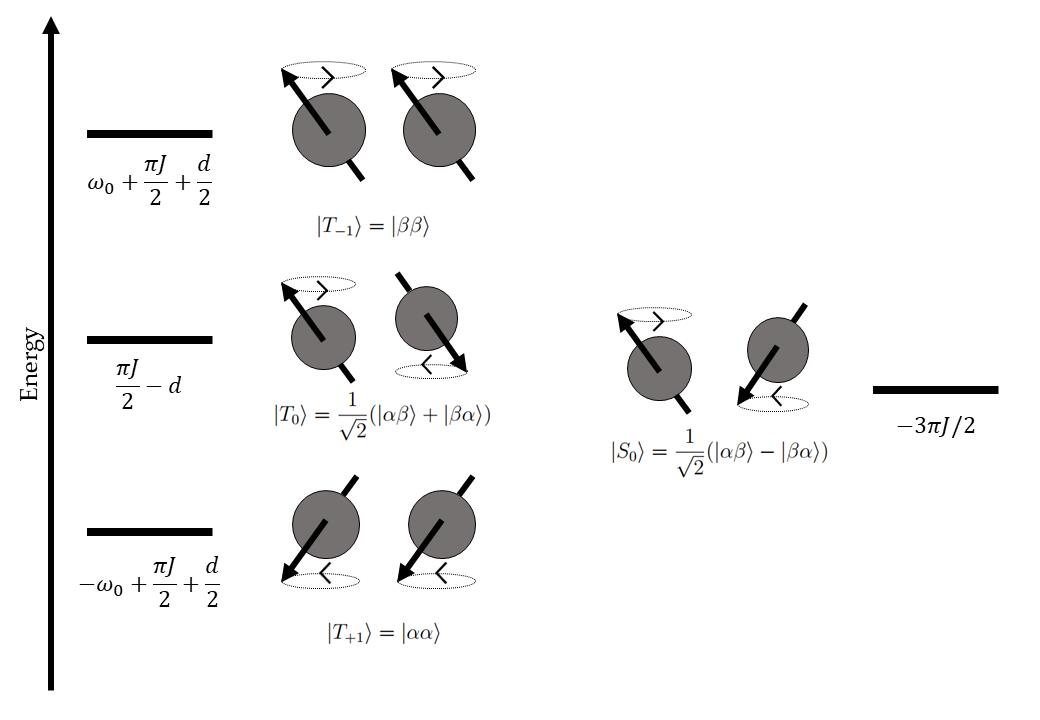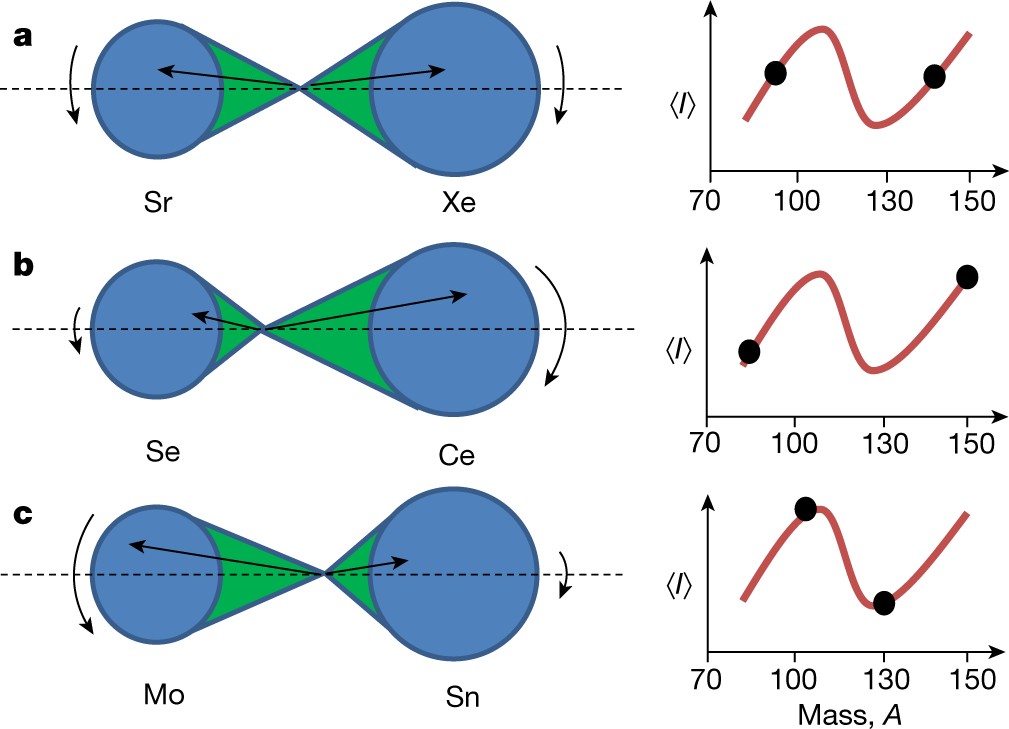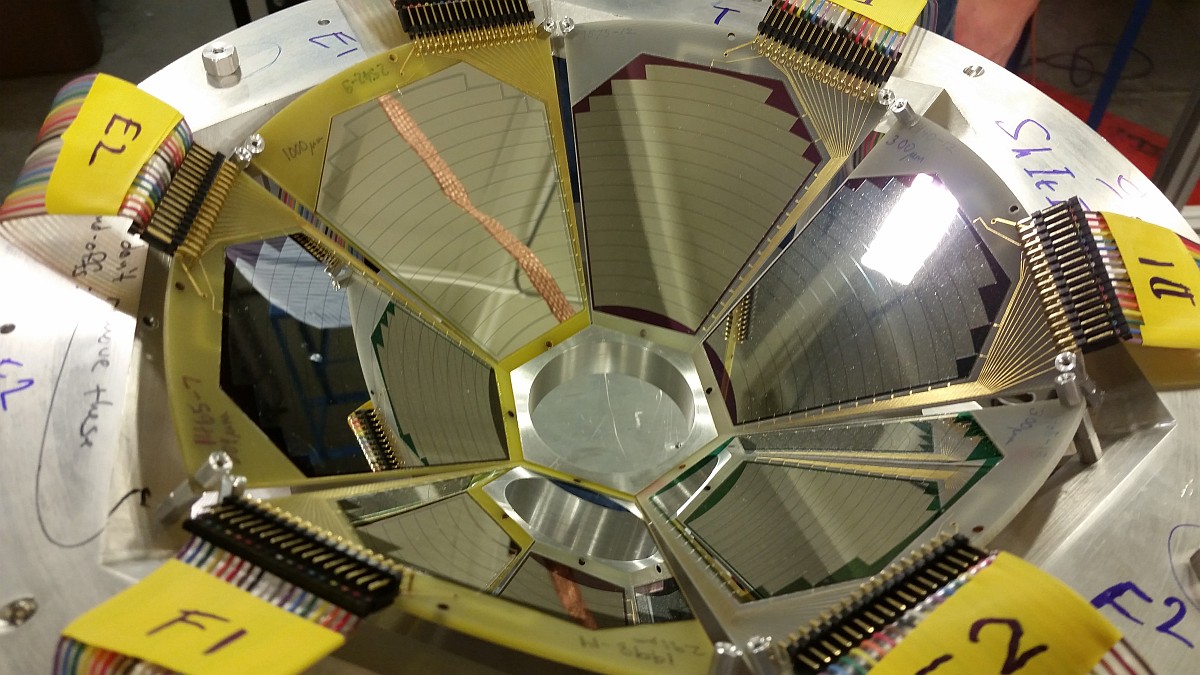High Power Laser Science and Engineering 11, e86
(Published on July 2023)

The spatial distribution of beams with orbital angular momentum in the far field is extremely sensitive to angular aberrations, such as astigmatism, coma and trefoil. A novel approach for estimating the Zernike coefficients of low-order angular aberrations in the near field was developed by the collaborators at GSI in Germany. The method was successfully implemented at the Extreme Light Infrastructure - Nuclear Physics facility, in the first user experimental campaign. It proves the capability of HPLS to deliver high quality focused helical pulses at 100 TW, 10 Hz repetition rate.
Article published on 10 April 2024 in Physics Letters B Volume 852, 138590, available online
The vortex photons (also referred to as twisted or orbital angular momentum [OAM] photons), open new research avenues across several scientific fields. However, their application in nuclear physics research has not been studied in depth. In the present study, we have demonstrated the perspectives for the nuclear physic studies with the OAM photons. At first, the interaction formalism of nuclei with vortex photons is developed and incorporated into the statistical nuclear reaction model.

Scientific Reports 13, 7464 (Published on May 2023)

In the context of nuclear warhead verification, this work proposes an algorithm that combines for the first time, nuclear resonance fluorescence, machine learning and homomorphic inference to achieve zero-knowledge verification. Two elements ensure the security of the protocol, the implementation of the template-based protocol at the architecture level, using Siamese networks, and the use of homomorphic encryption at inference time. The results of this work are presented in two parts: an extensive 2D example demonstrating the capability of Siamese neural networks to address the warhead verification problem and a single-point analysis highlighting the advantages and current limitations of homomorphic inference.
Journal of Physical Chemistry Letters 2023, 14, XXX, 4247 - 4251
(Published on May 2023)
Imaging the molecular kinetics of antioxidants by magnetic resonance can contribute to the mechanistic understanding of therapeutic approaches. Magnetic resonance detection of the response to flashes of oxidative stress requires sequential spectroscopy on the same timescale on which reactive oxygen species are generated. We demonstrated an experiment for the follow-up of glutathione oxidation kinetics. On-the-fly stroboscopic detection minimizes the durations necessary for single acquisitions yet necessitates sustaining of magnetization lifetimes.

Scientific Reports volume 12, Article number: 16818 (Published on October 2022)

Even though the techniques used for breast cancer identification have advanced over the years, current mammography based on X-rays absorption, the "gold standard" screening test at present, still has some shortcomings as concerns sensitivity and specificity to early-stage cancers, due to poor differentiation between tumor and normal tissues, especially in the case of the dense breasts. In this paper, we investigate a possible additional technique for breast cancer detection with higher sensitivity and low dose, X-ray phase-contrast or refraction-based imaging with ultrahigh angular sensitivity grating interferometers, having several meters length.
Physics in Medicine & Biology Volume 67, Number 23 (Published on December 2022)
Even though the techniques used for breast cancer identification have advanced over the years, current mammography based on X-rays absorption, the "gold standard" screening test at present, still has some shortcomings as concerns sensitivity and specificity to early-stage cancers, due to poor differentiation between tumor and normal tissues, especially in the case of the dense breasts. In this paper, we investigate a possible additional technique for breast cancer detection with higher sensitivity and low dose, X-ray phase-contrast or refraction-based imaging with ultrahigh angular sensitivity grating interferometers, having several meters length.

Photonics 2022, 9(6), 389 (2022)

Nowadays laser systems worldwide deliver high peak power. We are talking about pulses in excess of 1 PW. The paper published by High Power Laser Science and Engineering speaks about a performance that is difficult to match in the field of laser physics, i.e., generating and delivering 10.2 PW peak power laser pulses using the High Power Laser System (HPLS) at ELI-NP. In the abovementioned paper, the authors tackled for the first time the topic of full energy compression and propagation, full aperture, and described laser pulses reaching beyond the 10 PW power level. The present paper reports on the first demonstration of the production and propagation of full energy 10 PW pulses down to the experimental area where they will be used. For this demonstration, the full aperture and full energy laser pulses were compressed in the dedicated 10 PW compressors and transported in vacuum over 30 m distance to one of the experimental areas, using the Laser Beam Transport System (LBTS).
Photonics 9(6), 389
(Published on May 2022)

Photonics Magazine recently published an article by our colleagues: Ana-Maria Talposi, Vicentiu Iancu and Daniel Ursescu, scientific researchers at ELI-NP entitled: "Influence of Spatio-Temporal Couplings on Focused Optical Vortices". The article addresses for the first time in a systematic manner the combined contribution of the spatio-temporal distortions in ultrashort pulses and helical wavefront. It points out the rotation of the singularity in the optical vortex in the presence of the spatial chirp, angular chirp and pulse front tilt.
Progress in Nuclear Magnetic Resonance Spectroscopy, Volume 122
(Published on February 2021)
Applications of long-lived nuclear states in magnetic resonance to the study of biomarkers, protein structure, imaging, and metabolomics are presented. Recently-invented molecular symmetry-based approaches for magnetic resonance have implications that are significant for molecular imaging via magnetic resonance, in vitro as well as in vivo, for quantum computing and for other fields.

Physical Review Research 3, 033262
(Published on 17 September 2021)

The interactions of ultra-intense lasers with solid targets with nanowires received a lot of attention because they appear to show potentials to increase the laser light absorption rate. Laser-nanowire interactions open up various applications such as attosecond bunch generation, enhanced x-ray generation, brilliance gamma-ray yield, as well as efficient micro fusion. Many studies have experimentally shown enhanced laser energy absorption on a solid target covered by nanowires. The absorption mechanism at the nanoscale is not fully understood and exhibits a distinct behavior following the irradiation of an intense laser pulse.
Nature Communications, 12:4305
(Published on 14 July 2021)
Meteorites from interplanetary space often include high-pressure polymorphs of their constituent minerals, which provide records of past hypervelocity collisions. These collisions were expected to occur between kilometre-sized asteroids, generating transient highpressure states lasting for several seconds to facilitate mineral transformations across the relevant phase boundaries. However, their mechanisms in such a short timescale were never experimentally evaluated and remained speculative.

Scientific Reports volume 11, Article number: 1306
(Published 14 January 2021)
This study is a simulation work to explore the drug inspection based on the laser-Compton scattering (LCS) γ-ray source,
for example the variable energy Gamma (VEGA) system at ELI-NP.

Nature volume 590, pages 566–570
(Published 24 February 2021)

Nuclear physicists at the ELI-NP have contributed to an international research collaboration to determine how the spin of the two fragments, resulting from the splitting of an atomic nucleus,
is generated and published their findings in Nature.
Despite the process being known for a long time, one of the open questions about the process remaining to this day is why, when a heavy atomic nucleus fissions, the resulting fragments are observed to emerge spinning, even when
the original nucleus did not spin at all. There are many competing theories, but the majority state that the spin of the fission fragments is generated before the nucleus splits, leading to a clear correlation of the spins of the two partner fragments.
Physical Review Letters 125, 102503
(Published 02 September 2020)
The new findings come from an international collaboration led by nuclear experimentalist Dr. M. Spieker (Florida State University, USA).
The novel data were collected from (d,p) and resonant proton scattering experiments performed at the Q3D spectrograph of the Maier-Leibnitz
Laboratory in Garching, Germany.

Physical Review Applied 13, 054024
(Published on 11 May 2020)
The emission of collimated γ-ray beams from structured laser-irradiated targets with a prefilled cylindrical channel and its scaling with laser power (in the multi-PW range) is examined using three-dimensional kinetic simulations. The laser power is increased by increasing the laser energy and the size of the focal spot while keeping the peak intensity fixed at 5×1022 W/cm2.

Optics Letters Vol. 45, Issue 13, pp. 3454-3457
(Published 16 June 2020)

A simple method to amplify the laser pulse intensity by an order of magnitude from 8x1020 W/cm2 using a plastic re-entrant micro-cone target is proposed. We found an increase of the initial laser pulse intensity by more than 10 times for a micro-cone tip diameter of 5 μm upon performing two-dimensional particle-in-cell simulations.
Nature Communications vol. 11, Art. nb: 3242
(Published on 26 June 2020)
The exotic decay studied is a very rarely occurring type of decay in which a radioactive quantum state of an atomic nucleus, instead of decaying directly to a lower energy state with the emission of a single gamma-ray, emits two gamma rays and changes to an energetically lower state via a quantum double-leap through a virtual coupling to a higher-energy state. Such second-order double-decays are a unique consequence of quantum mechanics, first predicted in the doctoral dissertation of Nobel laureate Maria Göppert-Meyer under the supervision of Max Born in Göttingen University in 1931.

In this particular case, both single and double decays are allowed. Thus, this rare process is therefore called competitive double gamma decay by the scientists and is designated with the symbol "γγ/γ". On October 15, 2015, a team of nuclear physicists from Technische Universität Darmstadt announced the discovery of this process in the Ba-137 nuclide in the magazine Nature, showing that this process only occurs there with a probability of around two double-decays per one million single-decays.
Nature Physics 2020
(Published 01 June 2020)

Our international team, led by Julien Fuchs (LULI, France) and Sophia Chen (ELI-NP), carried out an experiment at Lawrence Livermore National Laboratory (USA) using two high-intensity short pulse laser beams: a first beam drives a broadband proton beam from a first target to probe the magnetic fields created in a second target irradiated by a second beam. We observed that the fields related to instability could be measured quite easily and that they existed over much longer than expected. It then took several years of theoretical and numerical effort, led by Laurent Gremillet et Charles Ruyer (CEA, France), using the advanced simulation codes and supercomputers to model the data (see Figure). In doing so, two variants of Weibel's instability were identified depending on the region of the plasma, namely the collisionless electromagnetic modulations can be measured as the energetic electrons traversed the dense center region and later the lower density coronal regions.
Physical Review C 101, 055801
(Published 14 May 2020)
One of the unresolved questions in nuclear astrophysics is the so-called "cosmological Lithium problem". Lithium isotopes are produced during the first 15 minutes after the Big Bang, the initial event that created the Universe. Big-Bang Nucleosynthesis (BBN) is the theory that predicts the abundances of light elements at the beginning of the Universe based on the cross sections of nuclear reactions. While for all the light elements there is a good agreement between observed and calculated primordial abundances, for Li-7 there is a discrepancy of a factor of 3-4.

The Charged Particle Detection group at ELI-NP proposed the measurement of the photodisintegration cross section of 7Li through the 7Li(γ,3H)4He reaction as one of the first experiments to be performed at ELI-NP using the γ-ray beam and the ELISSA detector array. However, before the ELI-NP facilities and detectors are implemented, a proof-of-principle proposal was initiated to measure the 7Li(γ,3H)4He reaction at HIγS.
Nature Communications, 10, Article number 5614
(Published 09 December 2019)
One of the promising approaches to ignite high density imploded fusion fuel (DD or DT) is fast ignition in inertial confinement laser fusion that separates the laser systems one for imploding the fuel shell to a high density and another for igniting the highly compressed core. We have tested so called "super-penetration mode" where a self-focusing fast heating beam penetrates the large corona plasma surrounding the compressed core and to heat the core via. fast electrons. Time sequences of the heating is clearly shown here. Our study indicates that the energy coupling efficiency can be improved up to 12% by optimizing the key factors in future ignition-scale plasmas.

 SCIENTIFIC NEWS
SCIENTIFIC NEWS